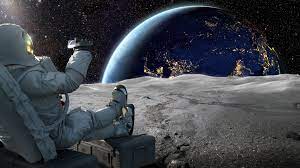The journey to the moon has fascinated humanity for centuries, and with the advent of space exploration, we’ve been able to turn this dream into reality. But just how long does it take to reach our nearest celestial neighbor? In this comprehensive exploration, we’ll delve into the intricacies of the journey to the moon, including the factors that affect travel time, the historical missions that have made the trip, and the future of lunar exploration.
Table of Contents
Understanding the Distance to the Moon
Before discussing travel time, it’s crucial to understand the distance between Earth and the moon. On average, the moon is approximately 384,400 kilometers (238,855 miles) away from Earth. This vast distance poses significant challenges for space travel, including the time it takes to reach the lunar surface.
Factors Affecting Travel Time
Several factors influence the duration of a journey to the moon:
- Launch Window: The timing of the launch is critical, as it determines the most efficient trajectory to reach the moon. Missions typically aim to take advantage of the moon’s orbit around Earth to minimize travel time and fuel consumption.
- Speed of the Spacecraft: The speed of the spacecraft plays a crucial role in determining travel time. Faster spacecraft can cover the distance to the moon more quickly, reducing the overall duration of the journey.
- Type of Mission: Different types of missions have varying travel times. Crewed missions, which carry astronauts, may take longer due to the need for life support systems and provisions. Uncrewed missions, such as robotic probes, may have shorter travel times.
Historical Missions to the Moon
Apollo Missions:
The Apollo program, led by NASA, remains the most iconic series of missions to the moon. The Apollo 11 mission, which landed the first humans on the moon, took approximately three days to travel from Earth to the lunar surface. Subsequent Apollo missions followed similar trajectories, with travel times ranging from two to four days.
Luna Missions:
The Soviet Union’s Luna program also achieved significant milestones in lunar exploration. The Luna 2 mission, which was the first human-made object to reach the moon, took around 36 hours to complete its journey. Subsequent Luna missions, including robotic landers and orbiters, had comparable travel times.
Future of Lunar Exploration
As we look to the future, several space agencies and private companies are planning ambitious missions to return humans to the moon and establish a sustainable presence. NASA’s Artemis program aims to land the first woman and the next man on the moon by the mid-2020s. Similarly, SpaceX, Blue Origin, and other commercial entities have announced plans for lunar exploration missions.
Artemis Program:
NASA’s Artemis missions will utilize the agency’s Space Launch System (SLS) rocket and Orion spacecraft to transport astronauts to lunar orbit. From there, a lunar lander will carry crew members to the surface. The travel time for Artemis missions is expected to be similar to that of the Apollo program, taking approximately three days from launch to landing.
Commercial Missions:
Private companies, such as SpaceX and Blue Origin, are developing their own lunar landers and spacecraft for commercial lunar exploration. These missions may have varying travel times depending on the capabilities of the spacecraft and launch vehicles.
The journey to the moon is a remarkable feat of human ingenuity and exploration. While travel time varies depending on factors such as launch window, spacecraft speed, and mission objectives, historical missions have typically taken around three days to reach the lunar surface. As we embark on new ventures in lunar exploration, including NASA’s Artemis program and commercial missions, the future holds exciting possibilities for further exploration and discovery in our nearest celestial neighbor.
SF
